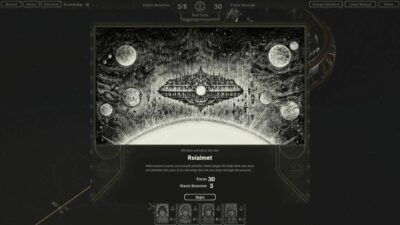
I cannot tell a lie, Telling Lies is truly great. Here’s our review of Sam Barlow’s follow-up to Her Story…
In Telling Lies, your only weapon is a search bar.
Writer/director Sam Barlow’s follow-up to Her Story casts the player as a rogue government agent with a stolen NSA hard drive full of secretly recorded video conversations. Each clip is one-sided – like you’re listening to an actor have a phone conversation in a stage play – and every video provides plenty of key words to fuel subsequent searches. Through this process, you’ll uncover a sticky, intriguing story, memorably brought to life by a central cast of four characters played by Logan Marshall-Green, Alexandra Shipp, Kerry Bishé, and Angela Sarafyan.
Your primary verb here is googling. The act of playing the game largely means typing a word or phrase, watching a series of videos that include that word or phrase, and then searching for videos containing a different word or phrase. As I played, I was reminded of a 2017 episode of The Nerdist podcast in which South Park co-creator, Trey Parker, derided The Witcher 3: Wild Hunt as a “cutscene hunter.”
“There’s a cutscene, and then you walk over here, and then another cutscene starts… ‘Do not let this become cutscene hunter,’” he said, as if speaking to the devs at Ubisoft who’d just finished work on South Park: The Fractured But Whole. “It’s supposed to be a game.”
And yet, and yet. The best game I’ve played so far this year can most accurately be described as a “cutscene hunter.”
I told you the actors’ names up top – and not the characters they play – because even revealing their roles feels like a spoiler. Giving more information than what I’ve already disclosed would mean ruining a huge chunk of the investigative work that Telling Lies invites players into. All you know as the game begins is what the opening cutscene shows you: that your character just hurried home, locked her apartment door behind her, and plugged the hard drive into her computer.
The joy of the game is discovering the sprawling, non-linear story that stretches out from that moment. Her Story was a psychological portrait of a young woman, limited to the breadth of her experience and the scope of an interrogation room. Telling Lies feels like a season of excellent, impeccably acted TV, chopped up into dozens of tantalising pieces. Barlow and his co-developers at Furious Bee have reaped creative dividends from the decision to include footage captured on cell phones, laptops, hidden cameras, and more. Where Her Story took place in a single room, Telling Lies broadens its vision, inviting players to follow the narrative to places both new and familiar.
As in Her Story, key words are your ticket on that journey. A selection of videos are queued up as the game begins, and each clip contains words and clues that inspire more searches. The moment of hearing a new, important-sounding word, entering it into the search bar, and turning up five results never stops being an electric thrill. This is the same core loop that animated Her Story, but in Telling Lies, the process has been improved. Now, each word of the subtitles that accompany a video can be underlined and searched. Clips can be fast-forwarded and rewound at various speeds. There’s a notepad on your agent’s desktop for keeping track of search terms. There’s even solitaire for the rare moments when you might get bored.
All of this makes the process easier and more intuitive, but it isn’t the only thing that makes Telling Lies a better game. Her Story’s commitment to showing a single actress telling a single story in a single room made for a highly focused game, but it also limited the excitement and sense of wonder that I felt as I played.
Her Story’s police interrogation setup ensured that it could never put me at the heart of the action. Going into Telling Lies, I knew nothing. Then, right away, the game whisked me away to disparate locations. A New York apartment. A civic centre. A boat. An arcade. Telling Lies stokes curiosity in a way that Her Story never could, because, from the first, it indicates that its story could take you anywhere. Her Story told. Telling Lies shows.
After dabbling for a few short play sessions, I found the time to completely devote myself to this game on a Friday night. I was rapt. I sat on my couch for six hours, typing and watching, typing and watching. There were moments when I thought I had seen everything Telling Lies had to show, and then a twist would recontextualise everything I had learned so far. Barlow’s idiosyncratic approach to storytelling has reached a new high here. The game’s refusal to tell you anything at the beginning makes each discovery feel important and earned. Discovering a new thread to follow feels like discovering a new area in a Metroidvania.
It’s that sense of possibility that kept me riveted. The magic of it, though, was that – to borrow a term – I was only hunting cutscenes.
Highlight
Upon completion, Telling Lies informed me that I had seen more than two-thirds of the database, which means I may have as much as one-third left to discover. Given the game’s tendency to throw twists at the player, I’m excited to dive back in and have my world upended again.
Verdict
Sam Barlow’s latest expands and improves on everything that made Her Story great.
92%
Genre: FMV
Format: PC (tested) / Mac / iOS
Developer: Sam Barlow, Furious Bee
Publisher: Annapurna Interactive
Price: £15.49
Release: Out now





